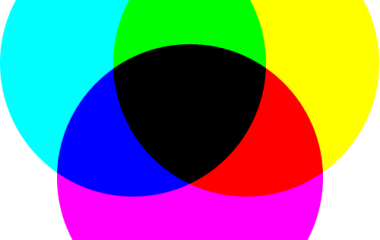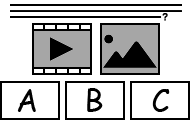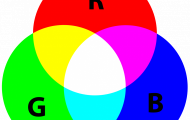Recent activities in this game
Someone had a problem at level 1. Primary colors .
2025-12-08 01:11 after 24 seconds of playing.
Someone got all questions correct at level 1. Primary colors .
2025-12-07 12:01 after 2 minutes of playing.
Someone had a problem at level 1. Primary colors .
2025-12-07 06:46 after 1 second of playing.
Someone got all questions correct at level 1. Primary colors .
2025-12-07 06:45 after 30 seconds of playing.
Someone got all questions correct at level 1. Primary colors .
2025-12-06 17:53 after 1 minute of playing.
Someone had a problem at level 2. Primary colors (Write) .
2025-12-05 22:36 after 1 minute of playing.
Someone got all questions correct at level 1. Primary colors .
2025-12-05 22:34 after 34 seconds of playing.
Someone got all questions correct at level 1. Primary colors .
2025-12-05 22:33 after 29 seconds of playing.
Someone got all questions correct at level 1. Primary colors .
2025-12-05 22:32 after 2 minutes of playing.
Someone had a problem at level 1. Primary colors .
2025-12-05 21:45 after 9 seconds of playing.
Advertisement

Learn the primary colors according to the subtractive color model and learn what happens when the colors are mixed.
Instructions for Color Theory CMYK
In this game you will learn the basic colors in the subtractive color model (CMYK) and what new colors are created when mixed. The mixed colors are called secondary colors.
All colors available can be created by blending the three primary colors (Cyan, Magenta and Yellow). The primary colors can be mixed in different proportions to get any color. For practical reasons, black is also used as a key color to enhance the constraints. The colors that can be mixed with only two pigments are called secondary colors.
1. Primary colors
 Multiple choice - The level consists of 3 questions (2 of which have pictures) and all are practiced every game round. For each question, the player is given three possible answers. Only one of these is correct. It is up to the player to choose the correct alternative. The student has 3 hearts (extra lives) that keep the game round going. There is no time limit. When the student has selected all the correct answers, the game round is completed. If it is too difficult, the player can click the button named Cancel - then the correct answers will be displayed - and then try to complete the level again.
Multiple choice - The level consists of 3 questions (2 of which have pictures) and all are practiced every game round. For each question, the player is given three possible answers. Only one of these is correct. It is up to the player to choose the correct alternative. The student has 3 hearts (extra lives) that keep the game round going. There is no time limit. When the student has selected all the correct answers, the game round is completed. If it is too difficult, the player can click the button named Cancel - then the correct answers will be displayed - and then try to complete the level again.2. Primary colors (Write)
 Questions with text answers - The level consists of 6 questions (4 of which have pictures) and all are practiced every game round. The student has to write the correct answer without color guidance and has 3 attempts to write the correct word or sentence in each question's text field that are not case-sensitive. The student receives feedback on each keystroke to make it easier to type the correct answer. If the entered character is correct, the text turns green and if it's incorrect, the text turns red. There is no time limit. When the student has written all the answers correctly, the game round is completed. If it is too difficult, the player can click the button named Cancel - then the correct answers will be displayed - and then try to complete the level again.
Questions with text answers - The level consists of 6 questions (4 of which have pictures) and all are practiced every game round. The student has to write the correct answer without color guidance and has 3 attempts to write the correct word or sentence in each question's text field that are not case-sensitive. The student receives feedback on each keystroke to make it easier to type the correct answer. If the entered character is correct, the text turns green and if it's incorrect, the text turns red. There is no time limit. When the student has written all the answers correctly, the game round is completed. If it is too difficult, the player can click the button named Cancel - then the correct answers will be displayed - and then try to complete the level again.3. Secondary colors
 Multiple choice - The level consists of 6 questions (all of which have pictures) and all are practiced every game round. For each question, the player is given three possible answers. Only one of these is correct. It is up to the player to choose the correct alternative. The student has 3 hearts (extra lives) that keep the game round going. There is no time limit. When the student has selected all the correct answers, the game round is completed. If it is too difficult, the player can click the button named Cancel - then the correct answers will be displayed - and then try to complete the level again.
Multiple choice - The level consists of 6 questions (all of which have pictures) and all are practiced every game round. For each question, the player is given three possible answers. Only one of these is correct. It is up to the player to choose the correct alternative. The student has 3 hearts (extra lives) that keep the game round going. There is no time limit. When the student has selected all the correct answers, the game round is completed. If it is too difficult, the player can click the button named Cancel - then the correct answers will be displayed - and then try to complete the level again.4. Secondary colors (Write)
 Questions with text answers - The level consists of 6 questions (all of which have pictures) and all are practiced every game round. The student has to write the correct answer without color guidance and has 3 attempts to write the correct word or sentence in each question's text field that are not case-sensitive. The student receives feedback on each keystroke to make it easier to type the correct answer. If the entered character is correct, the text turns green and if it's incorrect, the text turns red. There is no time limit. When the student has written all the answers correctly, the game round is completed. If it is too difficult, the player can click the button named Cancel - then the correct answers will be displayed - and then try to complete the level again.
Questions with text answers - The level consists of 6 questions (all of which have pictures) and all are practiced every game round. The student has to write the correct answer without color guidance and has 3 attempts to write the correct word or sentence in each question's text field that are not case-sensitive. The student receives feedback on each keystroke to make it easier to type the correct answer. If the entered character is correct, the text turns green and if it's incorrect, the text turns red. There is no time limit. When the student has written all the answers correctly, the game round is completed. If it is too difficult, the player can click the button named Cancel - then the correct answers will be displayed - and then try to complete the level again.5. Complementary colors
 Multiple choice - The level consists of 6 questions (all of which have pictures) and all are practiced every game round. For each question, the player is given three possible answers. Only one of these is correct. It is up to the player to choose the correct alternative. The student has 3 hearts (extra lives) that keep the game round going. There is no time limit. When the student has selected all the correct answers, the game round is completed. If it is too difficult, the player can click the button named Cancel - then the correct answers will be displayed - and then try to complete the level again.
Multiple choice - The level consists of 6 questions (all of which have pictures) and all are practiced every game round. For each question, the player is given three possible answers. Only one of these is correct. It is up to the player to choose the correct alternative. The student has 3 hearts (extra lives) that keep the game round going. There is no time limit. When the student has selected all the correct answers, the game round is completed. If it is too difficult, the player can click the button named Cancel - then the correct answers will be displayed - and then try to complete the level again.6. Complementary colors (Write)
 Questions with text answers - The level consists of 6 questions (all of which have pictures) and all are practiced every game round. The student has to write the correct answer without color guidance and has 3 attempts to write the correct word or sentence in each question's text field that are not case-sensitive. The student receives feedback on each keystroke to make it easier to type the correct answer. If the entered character is correct, the text turns green and if it's incorrect, the text turns red. There is no time limit. When the student has written all the answers correctly, the game round is completed. If it is too difficult, the player can click the button named Cancel - then the correct answers will be displayed - and then try to complete the level again.
Questions with text answers - The level consists of 6 questions (all of which have pictures) and all are practiced every game round. The student has to write the correct answer without color guidance and has 3 attempts to write the correct word or sentence in each question's text field that are not case-sensitive. The student receives feedback on each keystroke to make it easier to type the correct answer. If the entered character is correct, the text turns green and if it's incorrect, the text turns red. There is no time limit. When the student has written all the answers correctly, the game round is completed. If it is too difficult, the player can click the button named Cancel - then the correct answers will be displayed - and then try to complete the level again.Calculation of knowledge points and medals
Each completed game level in Color Theory CMYK gives 1 knowledge points. You can collect a maximum of 6 knowledge points by completing all 6 levels.
In the game Color Theory CMYK, you can earn a total of 18 medals. Medals are awarded based on how many times you have completed a level:
- Bronze medal: after completing 2 rounds.
- Silver medal: after completing 5 rounds.
- Gold medal: after completing 10 rounds.
Knowledge points are only awarded for levels you have not completed before, meaning those that do not yet have checked green circles. Even after completing a level and earning both knowledge points and medals, you can continue practicing it. However, this will not grant any additional knowledge points or medals.
Similar games
Additional game information
Reviews
Report
If you find a spelling mistake or something else that should be corrected, feel free to contact the game creator or us at Helpful Games.
Comments
There are a total of 2 comments on this knowledge game.
L
30 November 2021 18:25
S
9 July 2020 14:25

